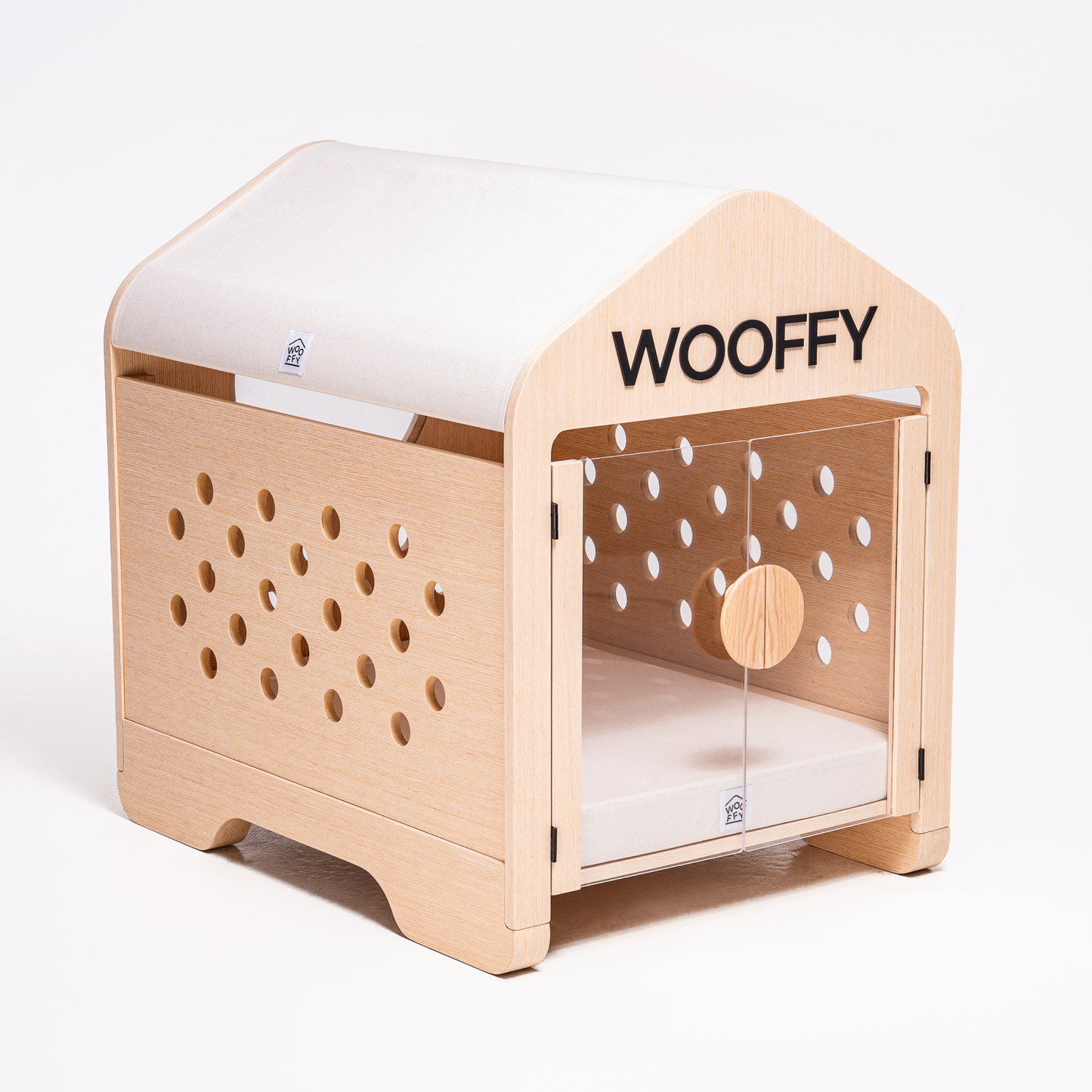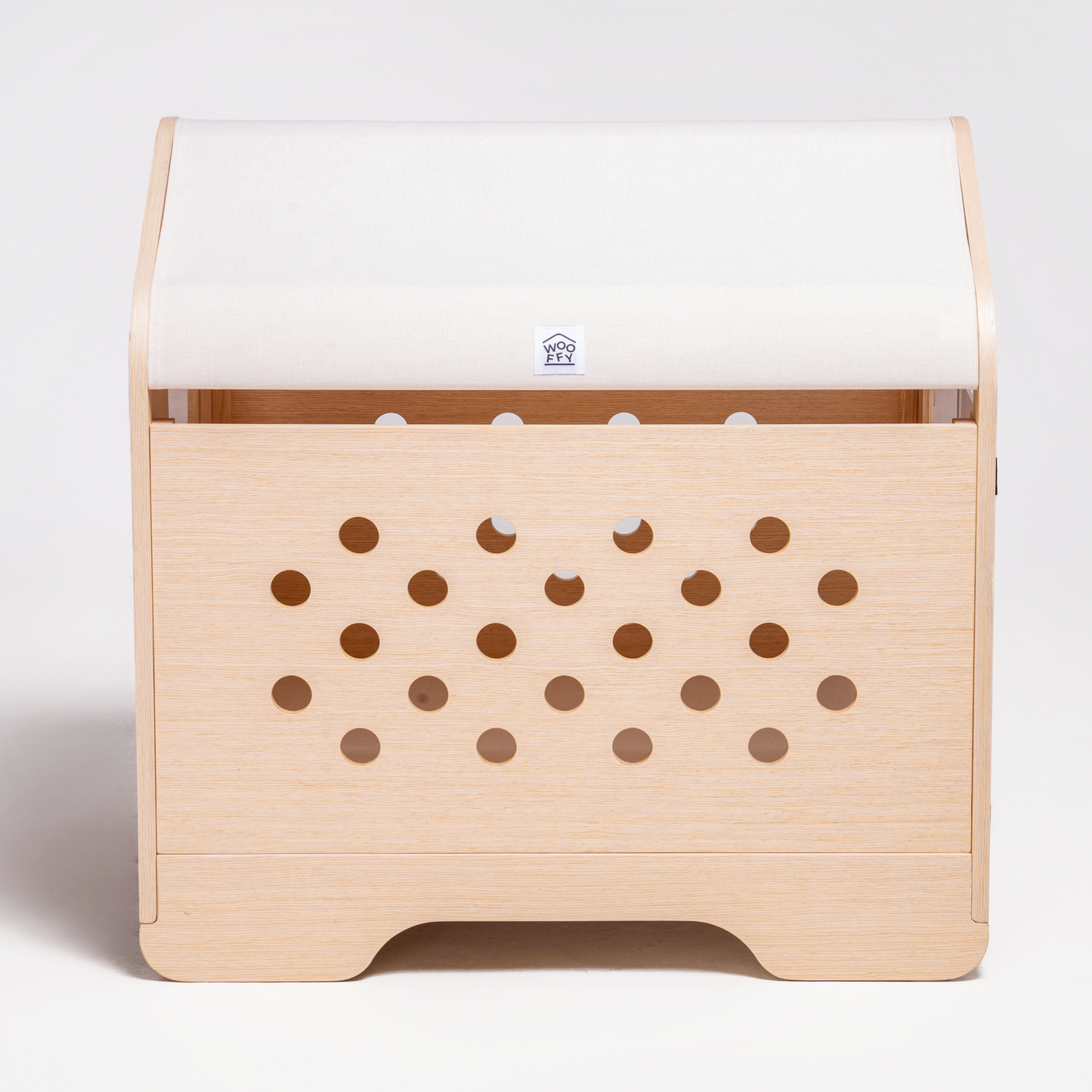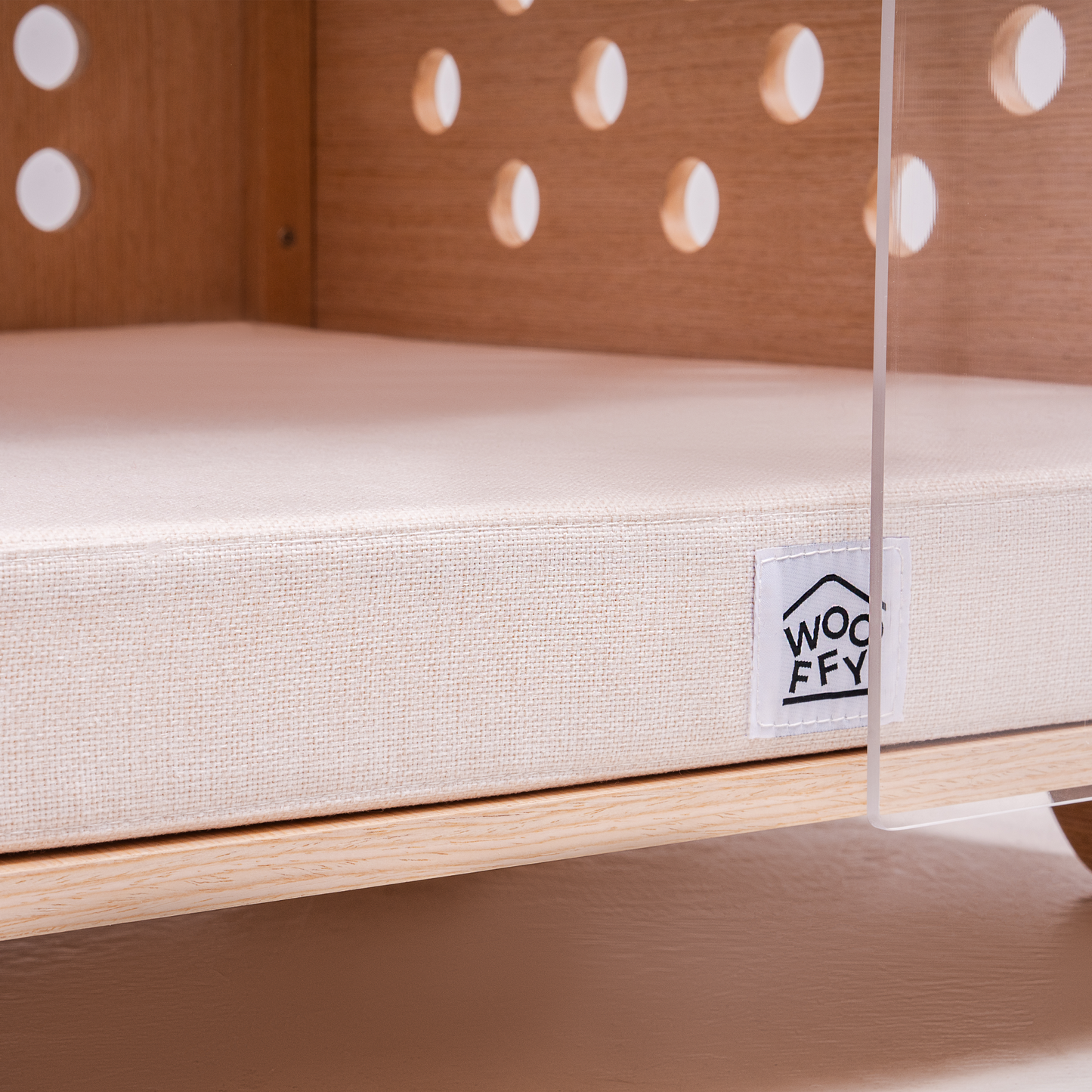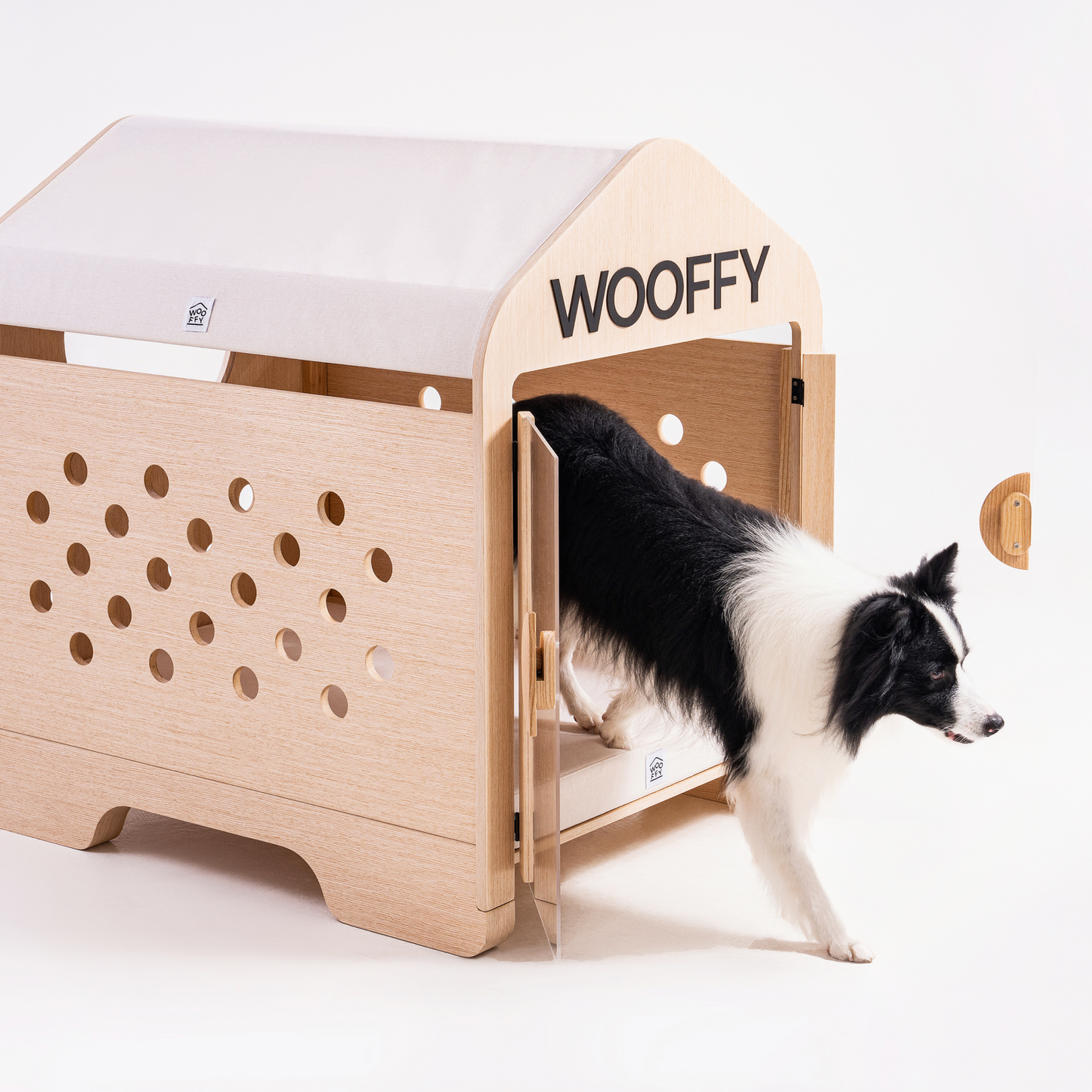
5 Common Questions About Dog Crates
Share
Crate training is a crucial part of raising a happy and healthy dog. However, there are many questions that dog owners often have about crate training and using a crate for their dog. This article will answer five common questions about dog crates: why crate training is important, what to consider when choosing a crate, when to start crate training, where to place the crate, and how long a dog should be kept in a crate.
Why is Crate Training Important for Dogs?
Crate training is important for dogs as it provides them with a sense of security and a space of their own. It aids in house training, prevents destructive behavior, facilitates travel, provides a management tool, promotes recovery, and eases transition to new environments.
-
Provides a Sense of Security: Dogs are den animals and a crate can mimic this natural den-like environment, providing them with a sense of security.
-
Helps with Anxiety: This can be particularly beneficial for dogs that are anxious or nervous.
-
Encourages Routine: Dogs do not like to soil their sleeping area, so they will naturally try to hold it until they are let out of the crate, helping to establish a routine and teach the dog to eliminate outside.
-
Prevents Destructive Behavior: A crate provides a safe space for your dog to stay when you are not at home, preventing them from chewing on furniture, shoes, or other items in the house.
-
Facilitates Travel: A crate-trained dog will be more comfortable and less stressed when traveling, making journeys easier for both you and your dog.
-
Provides a Management Tool: A crate can be used as a safe space for your dog to retreat to during stressful situations or when there are visitors, and as a management tool to prevent destructive behaviors when you are not at home.
-
Promotes Recovery: A crate can be a safe space for your dog to rest and recover after injury or surgery, preventing them from moving around too much and potentially causing further harm.
- Eases Transition to New Environments: A crate can provide a familiar and comfortable space for your dog when transitioning to a new environment, making the transition easier for both you and your dog.
What Should Be Considered When Choosing a Crate for Your Dog?
When choosing a crate for your dog, consider the size of the crate, the material of the crate, and the location where the crate will be placed.
-
Size of the Crate: The size of the crate is one of the most important factors to consider. It should be large enough for your dog to stand, turn around, and lie down comfortably, but not too large as a smaller space can help your dog feel more secure. Measure your dog's height and length and choose a crate that is slightly larger than these measurements.
-
Material of the Crate: The material of the crate is also important. There are three main types of crates: wire, plastic, and fabric. Wire crates provide good ventilation and visibility for your dog. Plastic crates are more enclosed and can provide a greater sense of security for your dog. Fabric crates are lightweight and portable, but may not be suitable for dogs that like to chew.
-
Location of the Crate: The location where the crate will be placed is also important. It should be placed in a quiet and comfortable area of your home where your dog can retreat to when needed. It should be away from drafts and direct sunlight. It is also helpful to place the crate in an area where your dog can still see and hear you.
- A Stylish Alternative: Once your dog is comfortable with the crate, you might want to consider a more permanent and stylish solution for your home. The Wooffy Modern Dog House is a stunning piece that adds a touch of elegance to any home decor whilst offering a warm, den-like atmosphere with optimal ventilation and light. It is a water-resistant and breathable bed, guaranteeing your dog a pleasant retreat. Check it out here.
When Should You Start Crate Training Your Dog?
It is best to start crate training your dog as a puppy, as they are more adaptable and can learn new routines more quickly. However, adult dogs can also be crate trained with patience and consistency.
-
Start Early: It is best to start crate training your dog as a puppy, as they are more adaptable and can learn new routines more quickly.
-
Be Patient and Consistent: Adult dogs can also be crate trained with patience and consistency. Never force your dog into the crate or use it as a punishment.
- Create Positive Associations: Start by introducing your dog to the crate in a positive and relaxed manner. Place the crate in a common area of your home and encourage your dog to explore it by placing treats and toys inside. Feed your dog their meals inside the crate to create positive associations with it.
Where Should You Place the Crate in Your Home?
The crate should be placed in a quiet and comfortable area of your home where your dog can retreat to when needed. It should be away from drafts and direct sunlight. It is also helpful to place the crate in an area where your dog can still see and hear you.
-
Choose a Quiet and Comfortable Area: The crate should be placed in a quiet and comfortable area of your home where your dog can retreat to when needed.
-
Avoid Drafts and Direct Sunlight: It should be away from drafts and direct sunlight.
- Allow Your Dog to See and Hear You: It is also helpful to place the crate in an area where your dog can still see and hear you.
How Long Should a Dog Be Kept in a Crate?
The amount of time a dog can be kept in a crate varies depending on their age and level of training. Puppies should not be kept in a crate for more than 3-4 hours at a time, as they need frequent potty breaks. Adult dogs can be kept in a crate for up to 8 hours, but it is important to provide them with plenty of exercise and socialization outside of the crate.
-
Consider Age and Level of Training: The amount of time a dog can be kept in a crate varies depending on their age and level of training.
-
Limit Time for Puppies: Puppies should not be kept in a crate for more than 3-4 hours at a time, as they need frequent potty breaks.
- Provide Exercise and Socialization: Adult dogs can be kept in a crate for up to 8 hours, but it is important to provide them with plenty of exercise and socialization outside of the crate.
Conclusion
Crate training is an essential tool for dog owners that provides numerous benefits for both dogs and their owners. It creates a safe space, aids in house training, prevents destructive behavior, facilitates travel, provides a management tool, promotes recovery, and eases the transition to new environments. Remember to create positive associations with the crate, choose the right size and material, start training early, choose the right location, and not leave your dog in the crate for extended periods of time. With patience and consistency, crate training can be a positive experience for both you and your dog.
Read More
- Understanding the Psychology of Crate Training Your Dog
- How to Manage Separation Anxiety with Crate Training
- The Benefits of Crate Training for Dogs and Their Owners
- Crate Training 101: Everything You Need to Know


























